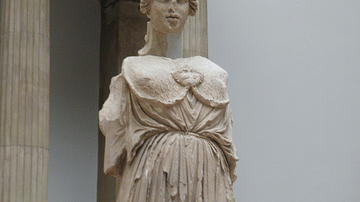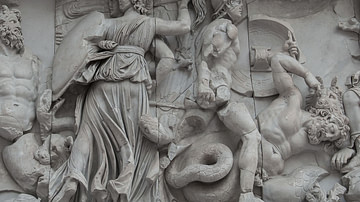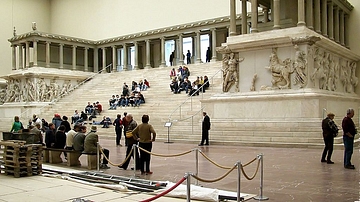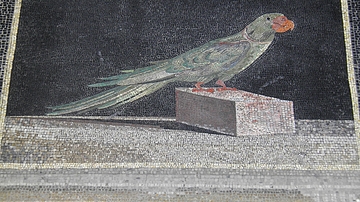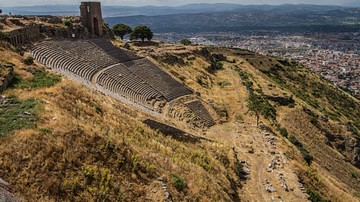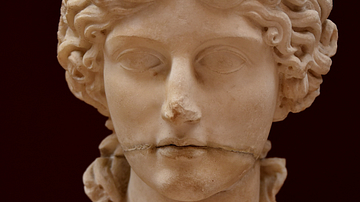Illustration
This head was found during the excavations of the lower agora of Pergamon; it seems that it had fallen there from one of the buildings on the higher city. The head reveals all of the characteristic features of the sculpted heads of Alexander the Great: the drooping of the head onto the shoulder and its slight backward inclination, the great mane of hair rising from the middle of the forehead like that of a lion's mane, and its falling on both sides in uneven locks, the round eyes with heavy lids and thick eyebrows, and the slightly open mouth which does not quite reveal the teeth. The deeply furrowed forehead brings to mind the enormous problems he had already encountered although so young, and with regard to its realistic rendering, is typical of the Pergamene art of sculpture during the reign of king Eumenes II. Marble. Hellenistic Period, first half of the 2nd century BCE. From Pergamon, Bergama, in modern-day Turkey. (Museum of Archaeology, Istanbul, Turkey).
NB: The description of the head was taken from the book "Istanbul Archaeological Museums" by Alpay Pasinli.
About the Author
Cite This Work
APA Style
Amin, O. S. M. (2018, May 12). Head of Alexander the Great from Pergamon. World History Encyclopedia. Retrieved from https://www.worldhistory.org/image/8682/head-of-alexander-the-great-from-pergamon/
Chicago Style
Amin, Osama Shukir Muhammed. "Head of Alexander the Great from Pergamon." World History Encyclopedia. Last modified May 12, 2018. https://www.worldhistory.org/image/8682/head-of-alexander-the-great-from-pergamon/.
MLA Style
Amin, Osama Shukir Muhammed. "Head of Alexander the Great from Pergamon." World History Encyclopedia. World History Encyclopedia, 12 May 2018. Web. 28 Mar 2025.



